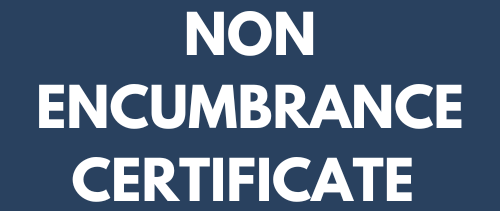"Daftese Consulting Private Limited"
NON ENCUMBRANCE CERTIFICATE
DETAILS ABOUT NON ENCUMBRANCE CERTIFICATE
3/13/20253 min read


NON-ENCUMBRANCE CERTIFICATE
A Non-Encumbrance Certificate (NEC) is an official document that certifies that a property is free from any legal or financial liabilities such as mortgages, loans, court cases, leases, or unpaid taxes. It provides proof that the property title is clear and that there are no claims or encumbrances against the property.
It is an essential document for conducting property transactions, applying for a loan against the property, or verifying the legal standing of a property before purchasing or inheriting it.
1. What is a Non-Encumbrance Certificate?
A Non-Encumbrance Certificate is a legal document that confirms that a property:
✅ Is not mortgaged to any financial institution.
✅ Has no outstanding loans or debts against it.
✅ Has no legal disputes or court cases associated with it.
✅ Is not leased or pledged to a third party.
The certificate is issued by the Sub-Registrar's Office or the Revenue Department where the property is registered. It reflects the property's financial and legal status over a specific period (usually covering the last 12 to 30 years).
2. Purpose of a Non-Encumbrance Certificate
The main purposes of a Non-Encumbrance Certificate are:
✅ Property Purchase: Confirms that the property has a clear title and can be legally sold.
✅ Property Loan: Required when applying for a loan or mortgage against the property.
✅ Transfer of Ownership: Essential for inheritance or gift of property.
✅ Property Dispute Resolution: Serves as evidence in case of ownership or financial disputes.
✅ Government Verification: Required for government land schemes and development projects.
✅ Tax Payment Clearance: Confirms that property tax and other dues are cleared.
3. Types of Non-Encumbrance Certificates
There are two main types of Non-Encumbrance Certificates:
Type
Description
Form 15
Issued if the property has any registered encumbrances (such as loans, mortgages, or court cases). It provides details of the encumbrance.
Form 16
Issued if the property is free from encumbrances. It certifies that no claims, debts, or disputes exist against the property.
4. Documents Required for Non-Encumbrance Certificate
To apply for a Non-Encumbrance Certificate, the following documents are required:
Document
Purpose
Application Form
Formal request for issuing NEC
Property Sale Deed/Title Deed
Proof of ownership of the property
Property Tax Receipt
Confirms that taxes are paid up to date
Identity Proof
Aadhaar Card, Voter ID, Passport, or PAN Card
Land Survey Number/Plot Number
Official property identification number
Encumbrance Period
Specify the period for which the encumbrance status is required
Authorization Letter (if applicable)
If the application is filed by a legal representative
5. Procedure to Obtain a Non-Encumbrance Certificate
The procedure for obtaining an NEC includes the following steps:
✅ Step 1: Application Submission
Submit a formal application at the local Sub-Registrar's Office or apply online (in states where online services are available).
Attach supporting documents and pay the applicable fee.
✅ Step 2: Document Verification
The Sub-Registrar will verify the following:
Property details in the official land records.
Encumbrances registered against the property.
Status of property tax payment and mortgage records.
✅ Step 3: Search of Encumbrance Records
The Sub-Registrar’s office will search the records for any encumbrances such as:
Registered mortgage agreements
Outstanding loans
Court cases
Leases or rentals
Any third-party claims
✅ Step 4: Issuance of Certificate
If no encumbrance is found, a Form 16 (Non-Encumbrance Certificate) will be issued.
If any encumbrance is found, a Form 15 (Encumbrance Certificate) detailing the encumbrance will be issued.
The certificate includes:
Property details (survey number, area, location)
Period covered by the certificate
Status of encumbrance (free or details of claims)
Signature and seal of the issuing authority
✅ Step 5: Payment of Fees
Fees for an NEC depend on:
Type of property (residential, commercial, agricultural)
Duration of encumbrance period (e.g., 12 years or 30 years)
State-specific regulations
6. Timeline for Issuance
Property Type
Processing Time
Residential Property
7 to 15 days
Agricultural Land
10 to 30 days
Commercial Property
15 to 30 days
Urgent Request
3 to 7 days (with additional fees)
7. Fees for Non-Encumbrance Certificate
The fee for an NEC varies depending on the state and period covered.
8. Legal Importance of Non-Encumbrance Certificate
📜 Proof of Ownership: Confirms the legal standing of the property.
📜 Clear Title: Confirms that there are no debts or claims on the property.
📜 Property Sale: Essential for selling a property.
📜 Mortgage and Loan: Required for securing a loan or mortgage.
📜 Protection Against Fraud: Ensures that the property is not being used as security for another loan.
9. Challenges in Obtaining a Non-Encumbrance Certificate
🚫 Incomplete Property Records: Missing or unclear land records may delay issuance.
🚫 Pending Legal Disputes: Ongoing court cases can prevent the issue of a clean certificate.
🚫 Forgery and Fraud: Fake documents or disputes over property ownership can lead to rejection.
🚫 Unregistered Encumbrances: If a loan or mortgage is not registered, it may not reflect in the certificate.
10. Remedies if NEC is Denied
✅ File an Appeal: Appeal with the higher authority if the certificate is denied.
✅ Court Intervention: Obtain a court order to resolve disputes affecting the certificate.
✅ Correction of Records: Update property records if they are outdated or incorrect.
✅ Submit Additional Proof: Provide additional proof of ownership or debt clearance.
🚀 Conclusion
A Non-Encumbrance Certificate (NEC) is a crucial legal document that confirms whether a property is free from financial and legal liabilities. It ensures that the property title is clear, protecting the buyer or lender from future disputes or claims. Obtaining an NEC before buying or selling property is essential for ensuring a smooth and legally secure transaction.
